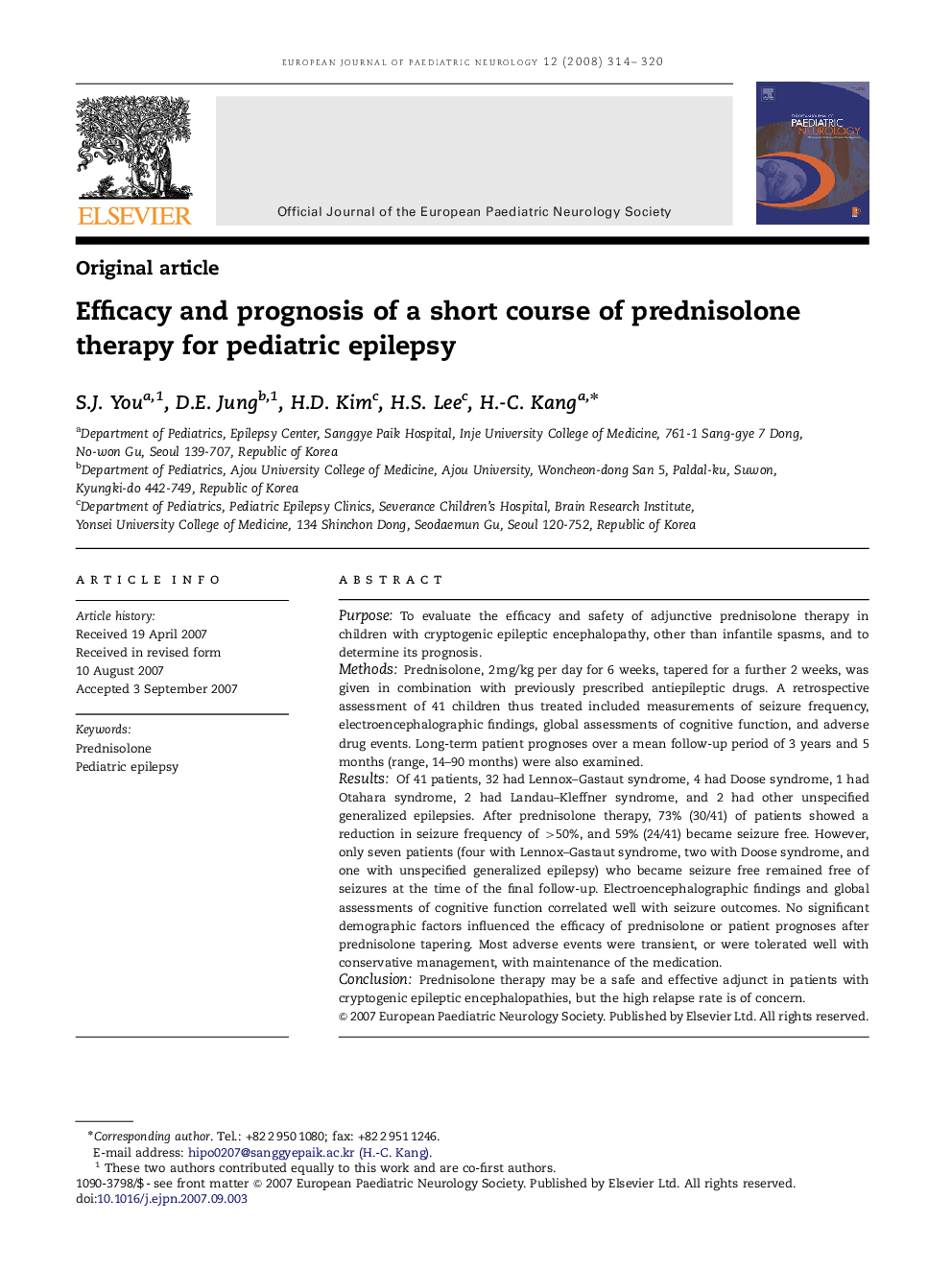| Article ID | Journal | Published Year | Pages | File Type |
|---|---|---|---|---|
| 3055013 | European Journal of Paediatric Neurology | 2008 | 7 Pages |
PurposeTo evaluate the efficacy and safety of adjunctive prednisolone therapy in children with cryptogenic epileptic encephalopathy, other than infantile spasms, and to determine its prognosis.MethodsPrednisolone, 2 mg/kg per day for 6 weeks, tapered for a further 2 weeks, was given in combination with previously prescribed antiepileptic drugs. A retrospective assessment of 41 children thus treated included measurements of seizure frequency, electroencephalographic findings, global assessments of cognitive function, and adverse drug events. Long-term patient prognoses over a mean follow-up period of 3 years and 5 months (range, 14–90 months) were also examined.ResultsOf 41 patients, 32 had Lennox–Gastaut syndrome, 4 had Doose syndrome, 1 had Otahara syndrome, 2 had Landau–Kleffner syndrome, and 2 had other unspecified generalized epilepsies. After prednisolone therapy, 73% (30/41) of patients showed a reduction in seizure frequency of >50%, and 59% (24/41) became seizure free. However, only seven patients (four with Lennox–Gastaut syndrome, two with Doose syndrome, and one with unspecified generalized epilepsy) who became seizure free remained free of seizures at the time of the final follow-up. Electroencephalographic findings and global assessments of cognitive function correlated well with seizure outcomes. No significant demographic factors influenced the efficacy of prednisolone or patient prognoses after prednisolone tapering. Most adverse events were transient, or were tolerated well with conservative management, with maintenance of the medication.ConclusionPrednisolone therapy may be a safe and effective adjunct in patients with cryptogenic epileptic encephalopathies, but the high relapse rate is of concern.
